Abstract
1. When a downward saccade is made between equidistant targets, convergence consistently occurs during the saccade: about 1 deg overconvergence after an 8 deg saccade, with either binocular or monocular viewing, with either far (3 m) or near (30 cm) viewing distance. 2. During binocular viewing, this unnecessary convergence is corrected by divergence movement with a half-time of about 200 ms. During monocular viewing of far targets, similar post-saccadic divergence occurs, but for monocularly-seen near targets, recovery is considerably slower. 3. Vergence changes associated with upward saccades are much smaller and typically more variable among subjects. 4. The up-down asymmetry of intrasaccadic vergence changes can be accounted for by superposition of two plausible adventitious processes: co-contraction of the vertical recti, and tension increase (upward saccades) or tension release (downward saccades) in the superior oblique muscles. 5. During the 1000 ms after an upward saccade, constriction of the pupil consistently occurs; it apparently represents a near-triad response, for which concurrent convergence is masked. Such near-triad activation during upward gaze would presumably be necessary to counterbalance residual steady-state torques from the superior oblique muscles. 6. The up-down asymmetry of intrasaccadic vergence changes also arises when targets require both a vergence change and a vertical shift of gaze, thereby accelerating refixation for the typical natural spatial configuration, in which nearer objects are lower in the visual field. 7. During binocular viewing of equidistant targets, the convergence resulting from downward saccades produces large transient disparities, which can be expected to lead to biased evaluations of relative distances to targets. Several up-down illusions involving apparent distance may well be due to these disparities, including (a) backward tilt of the apparent vertical and of the vertical horopter, (b) the 'soup-bowl sky' illusion, and (c) the 'diverging sunbeams' illusion.
Full text
PDF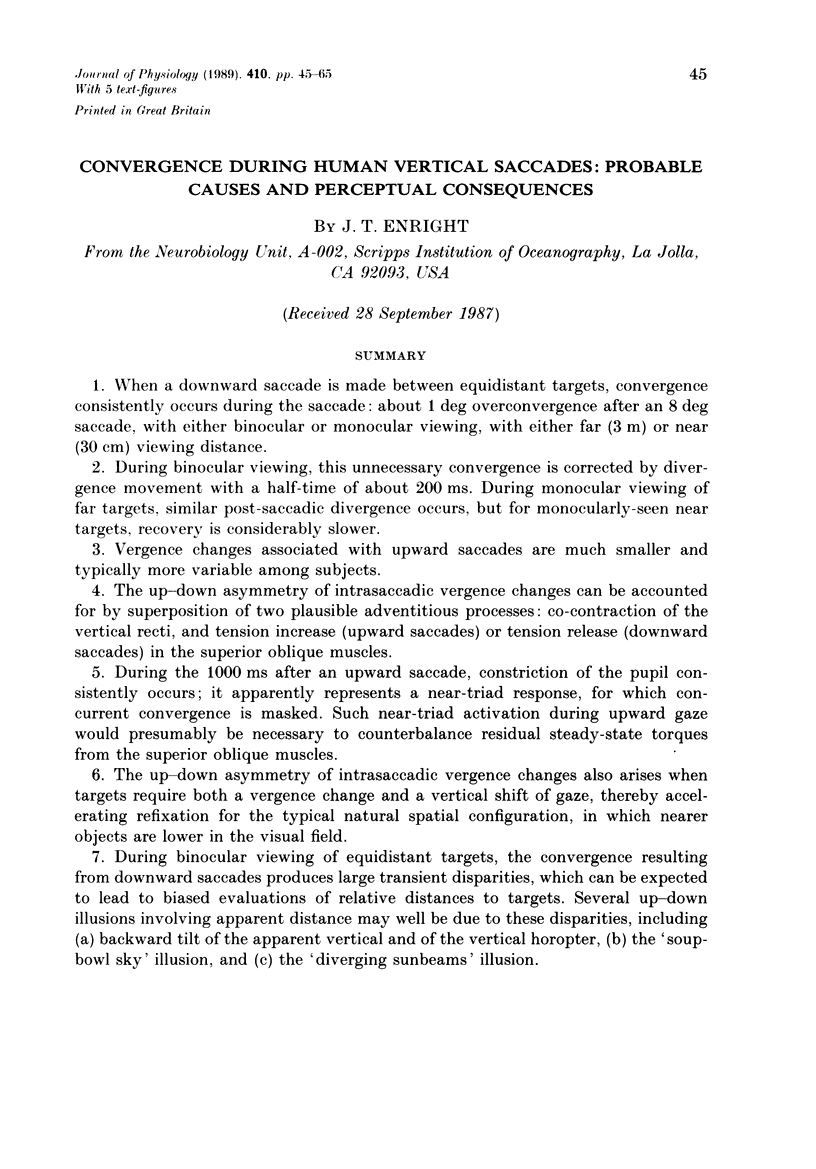
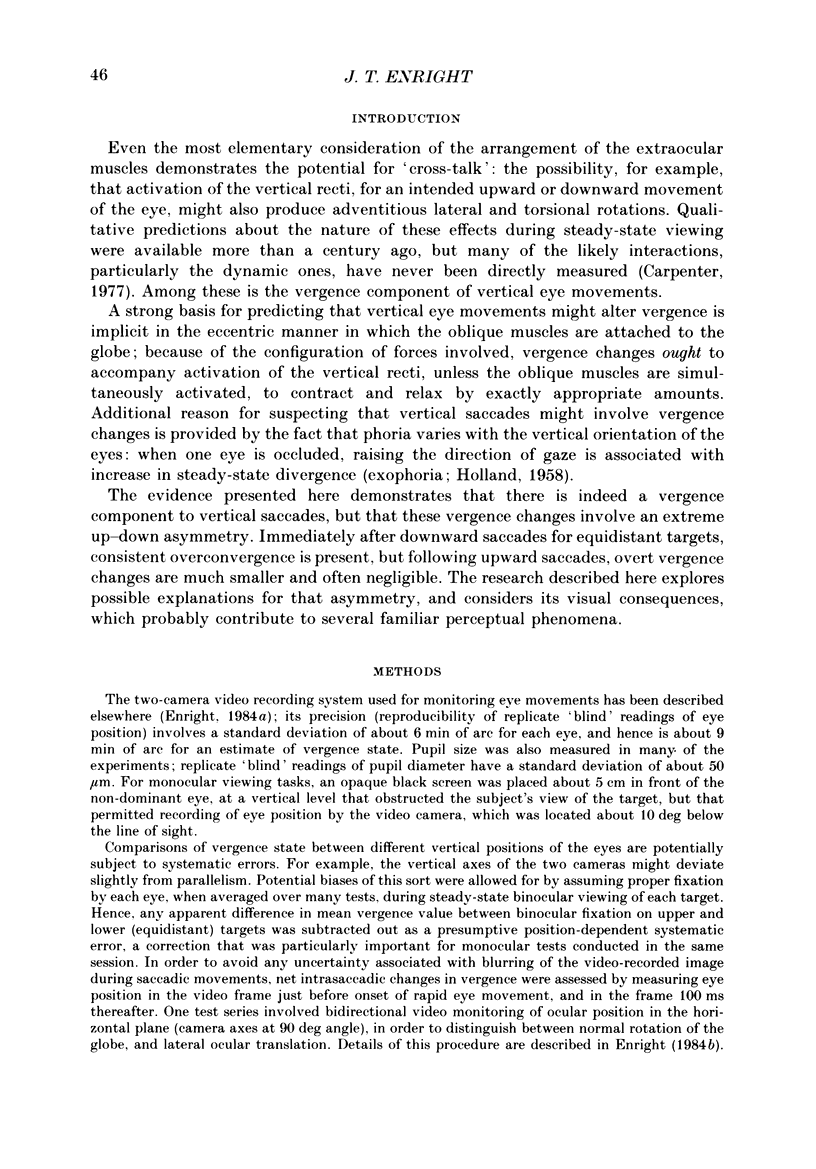
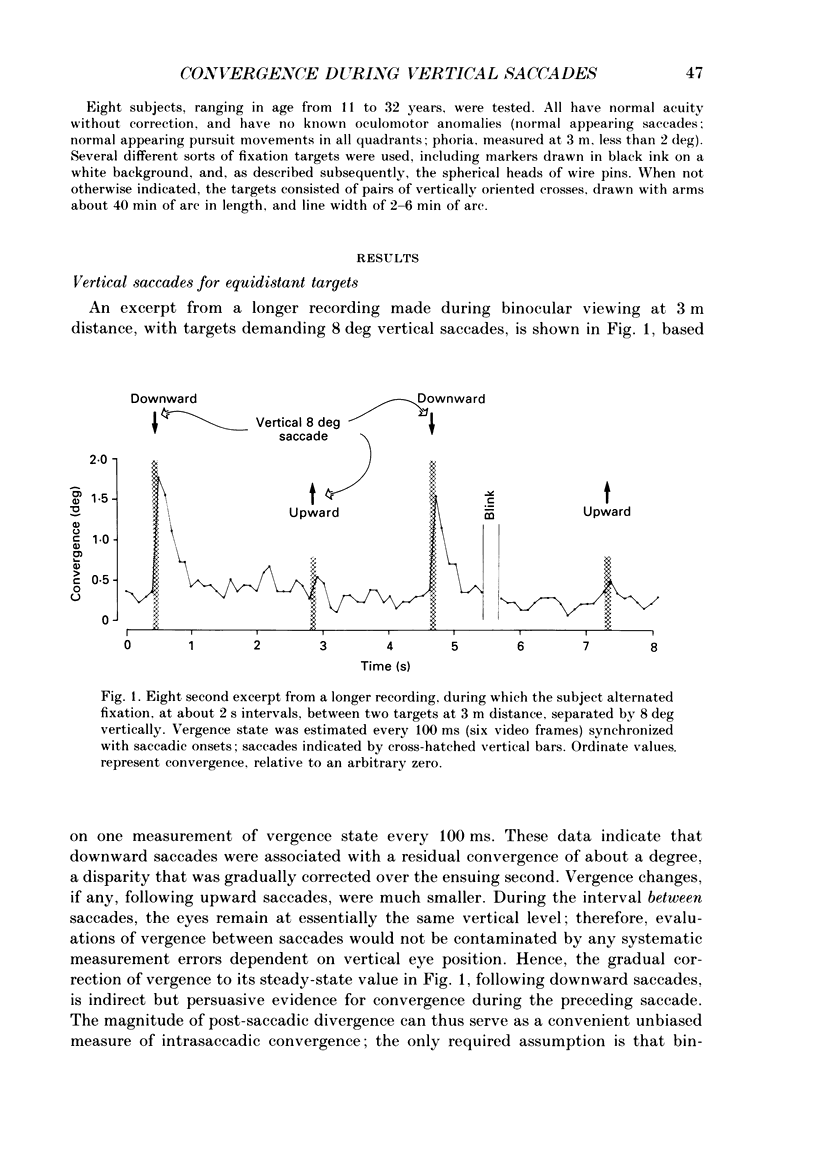
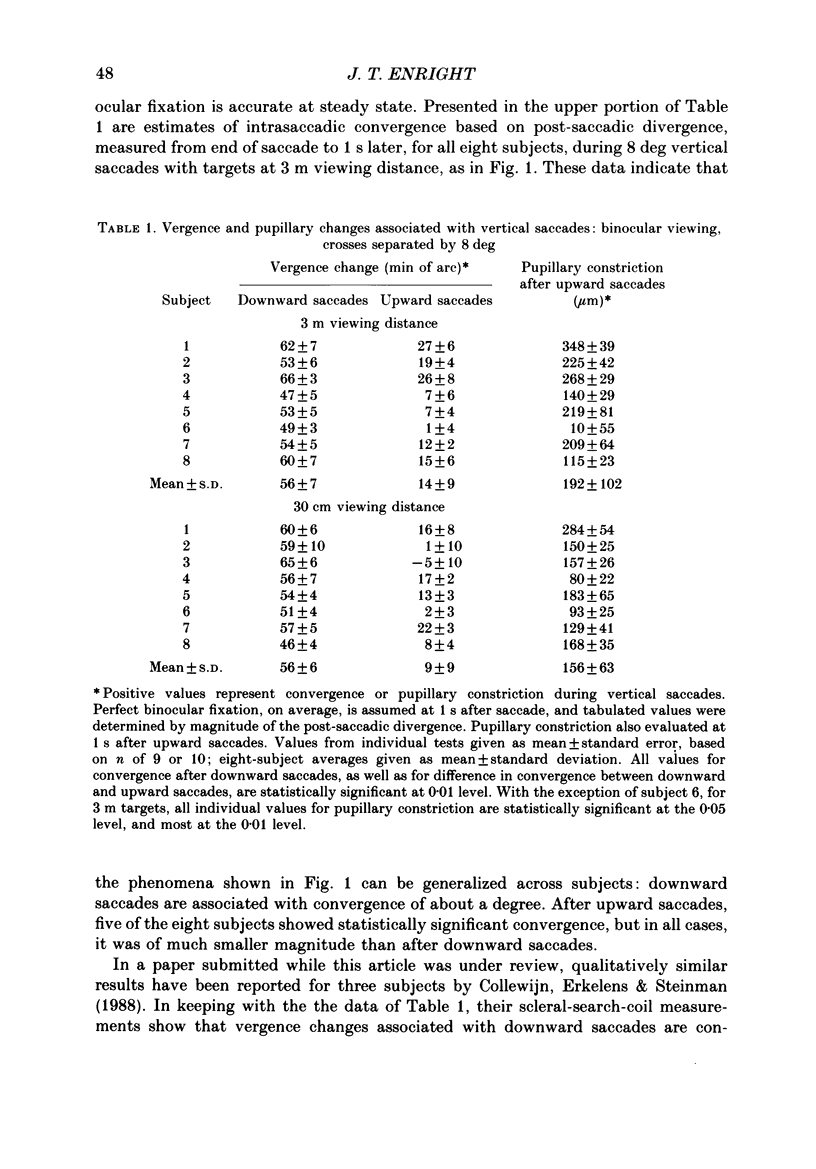
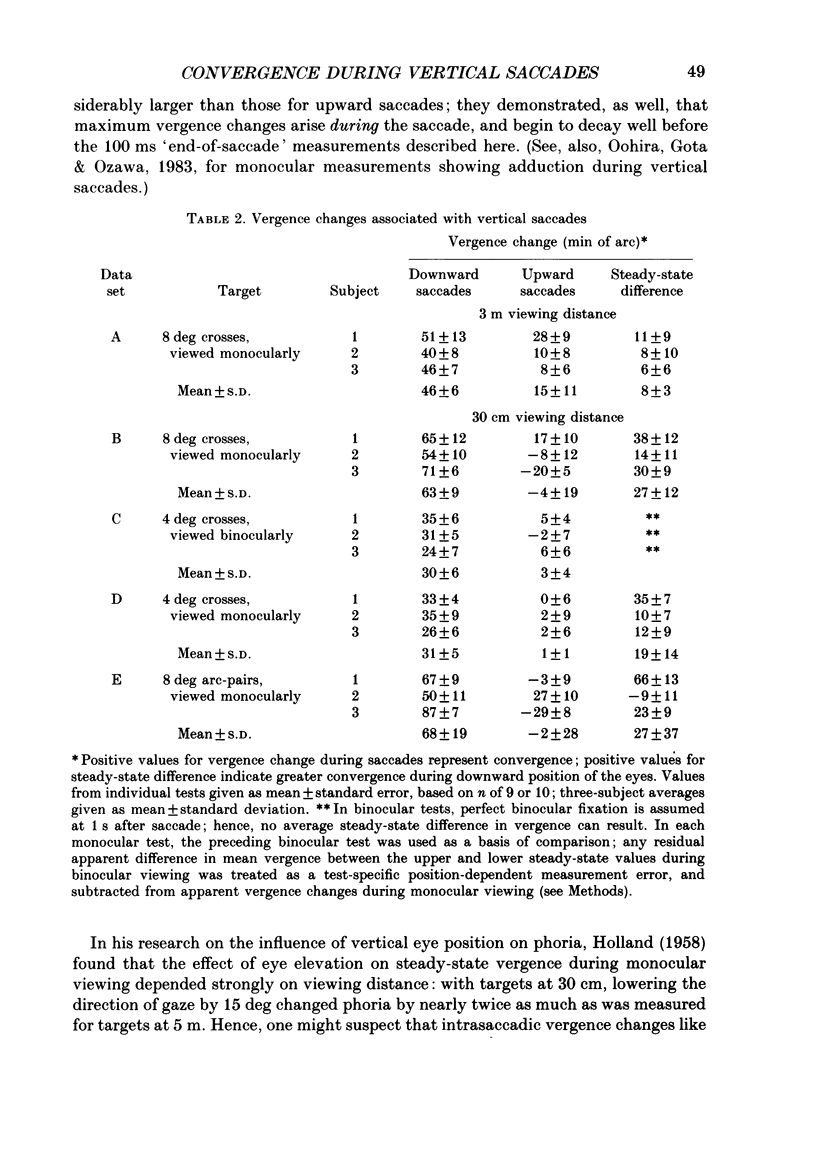
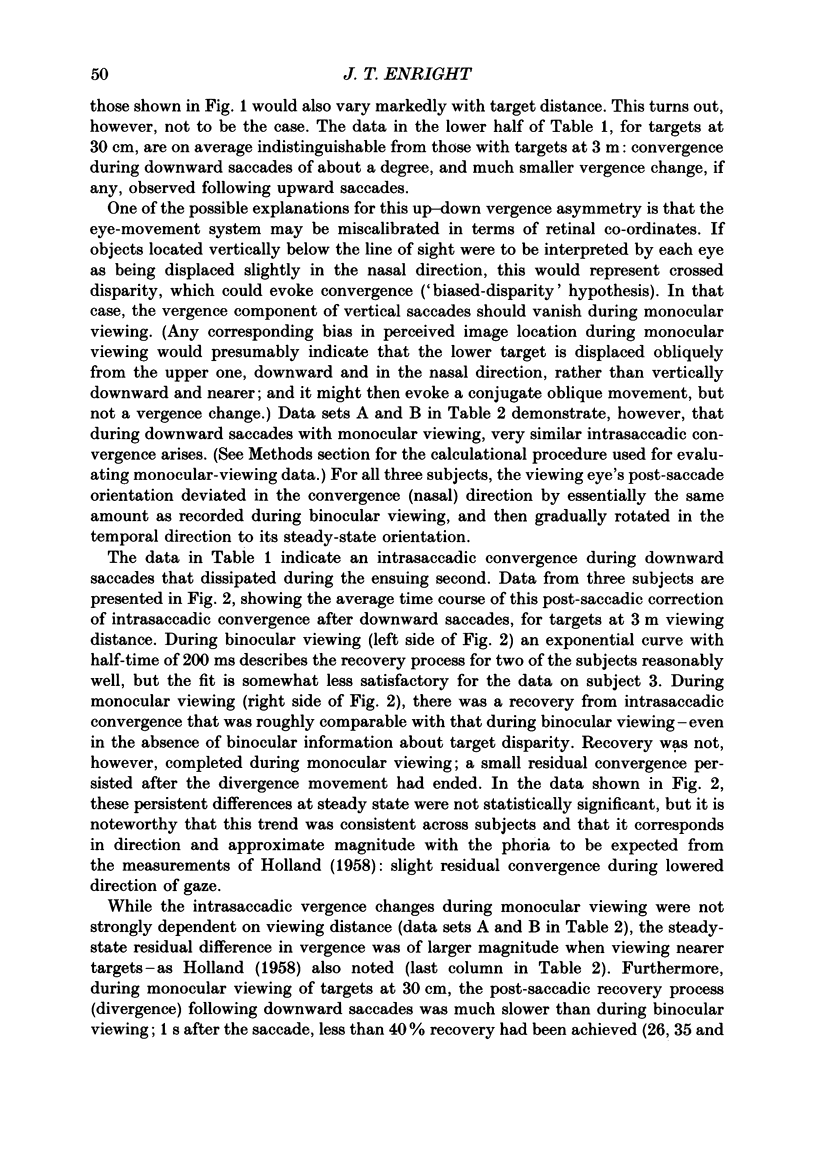
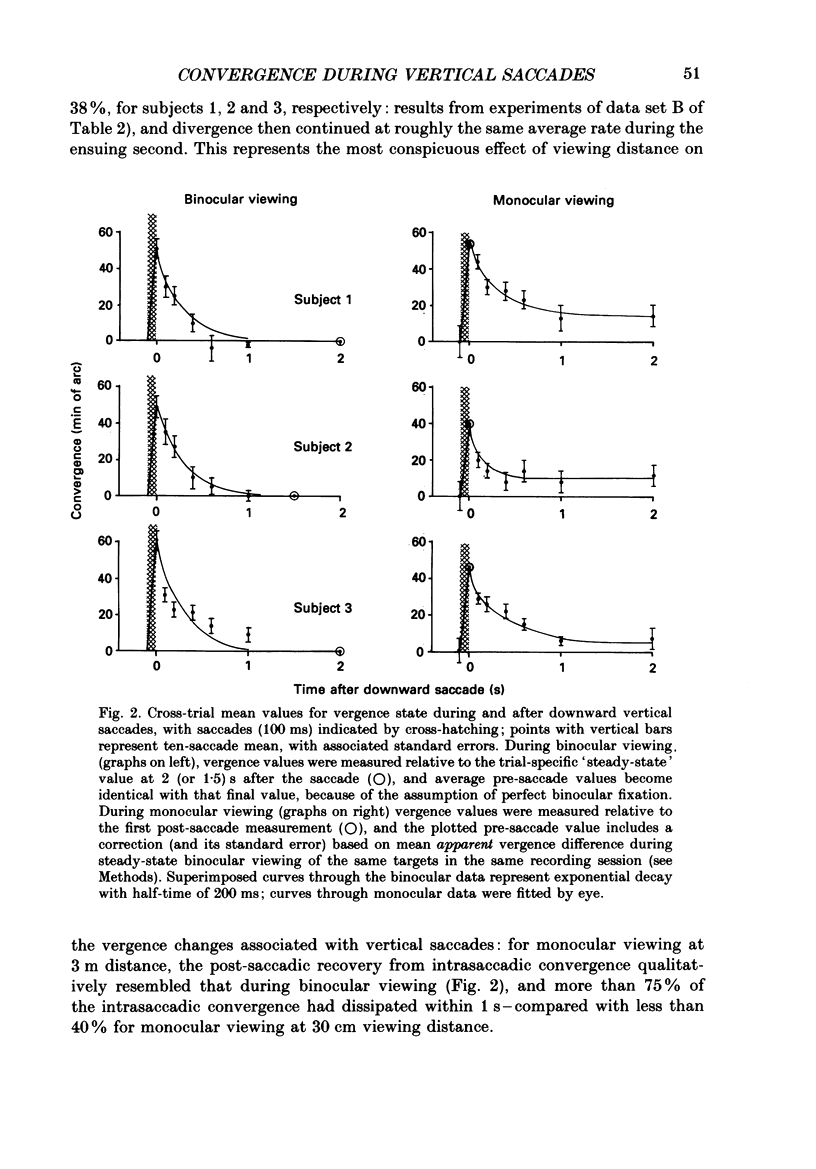
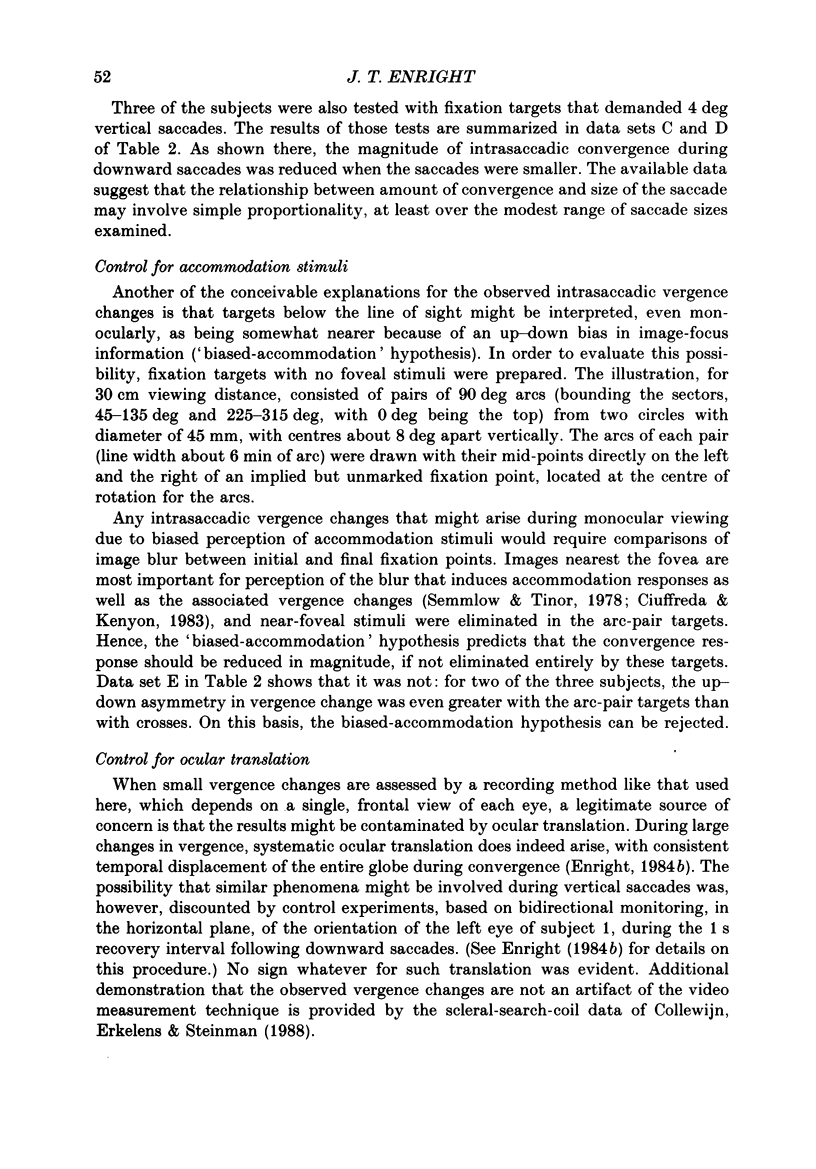
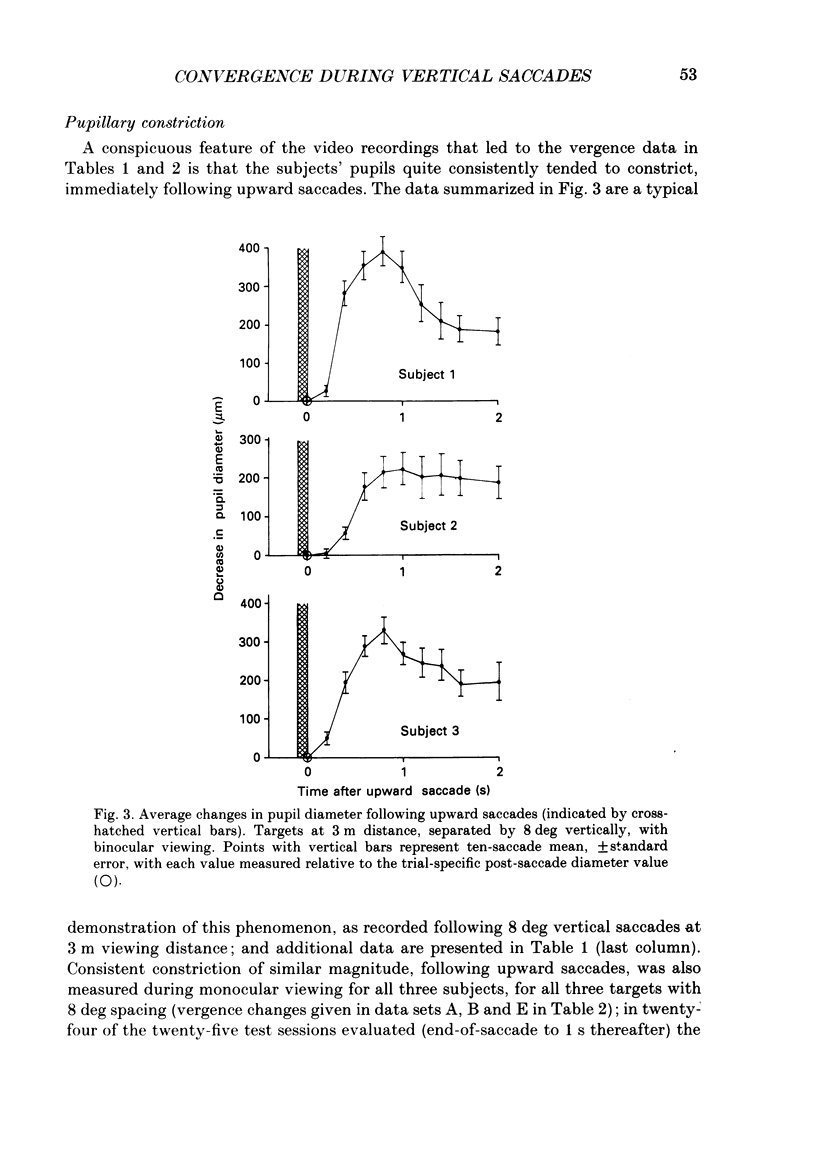
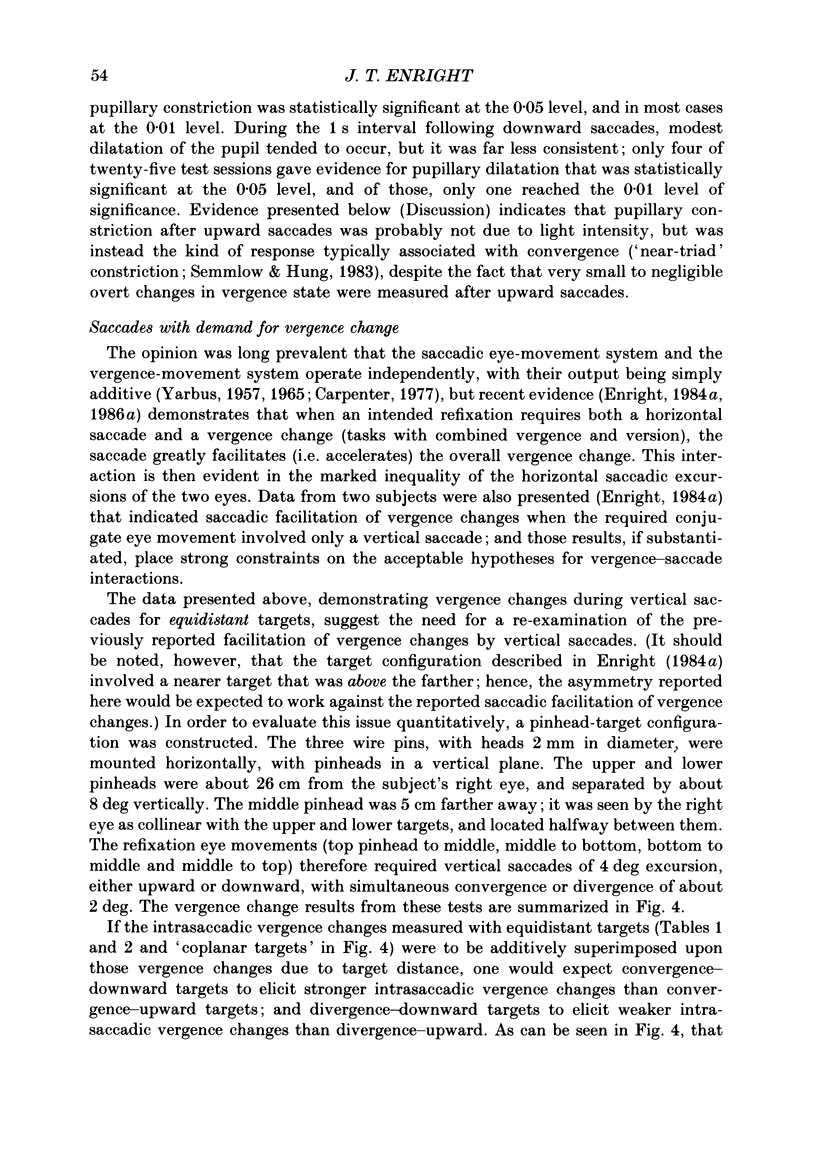
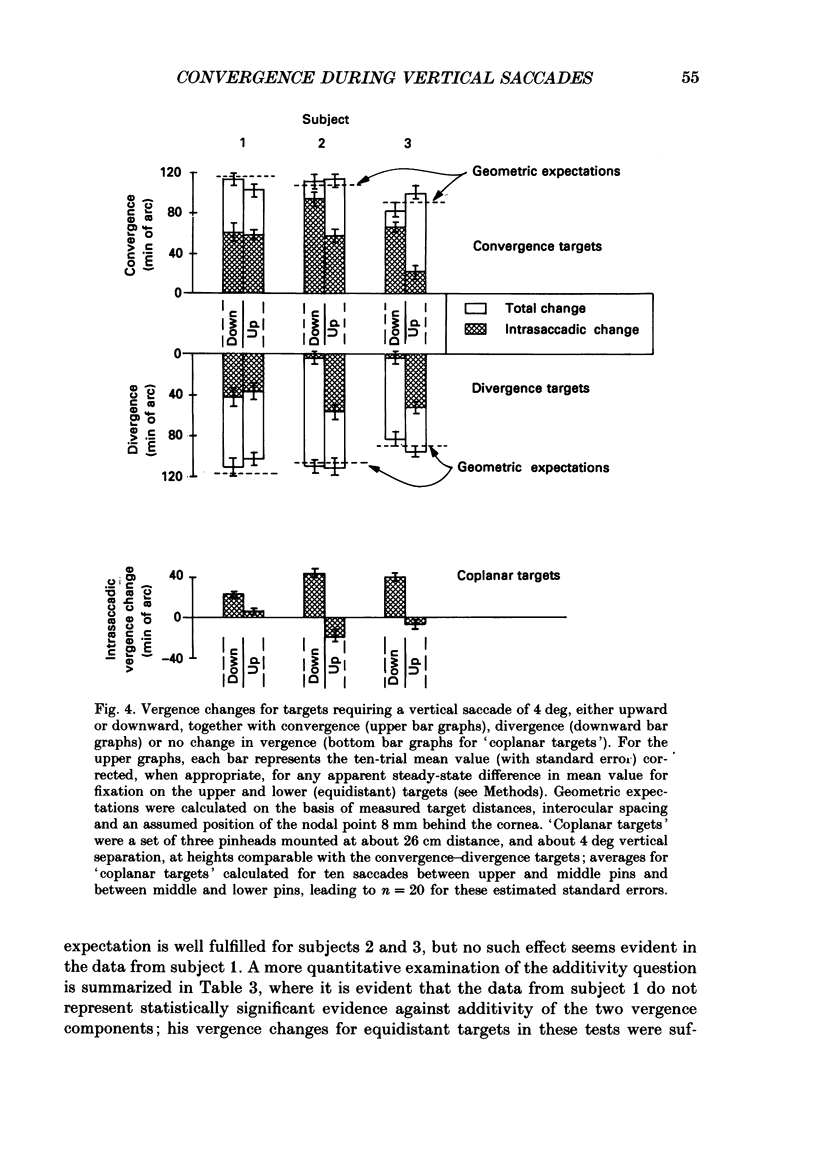
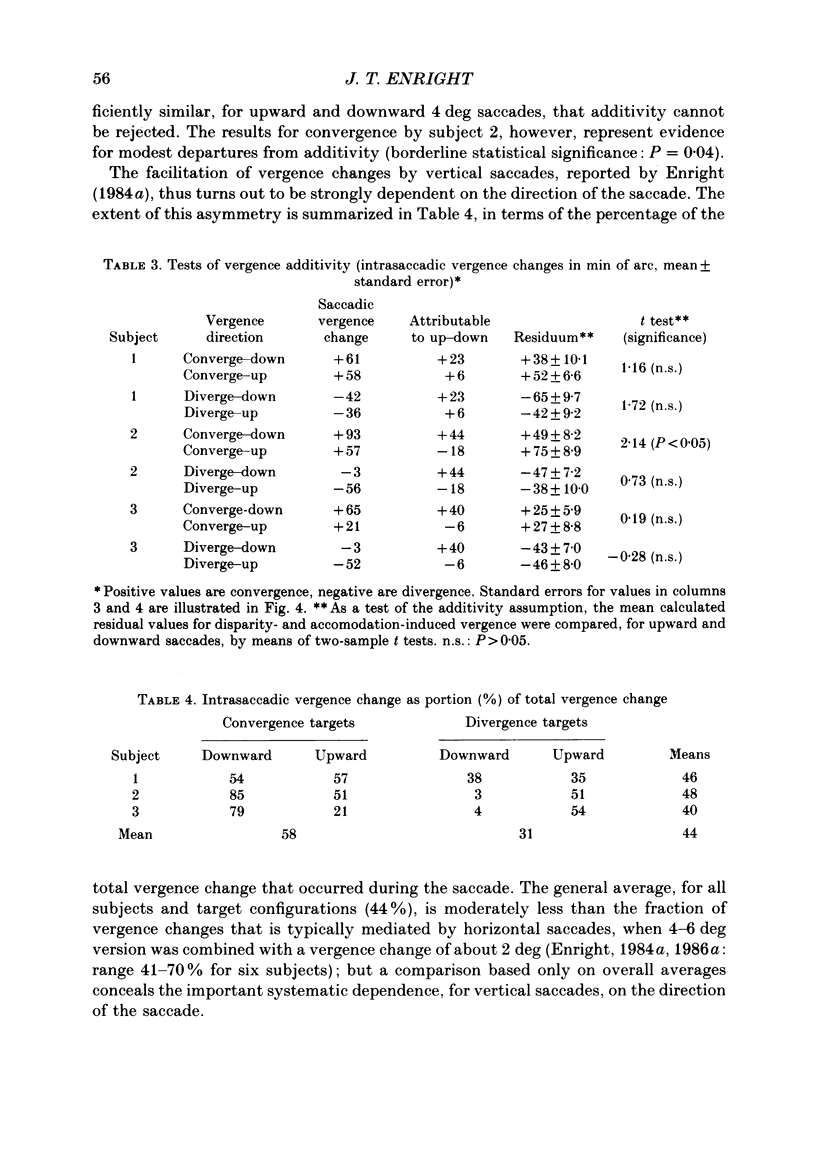
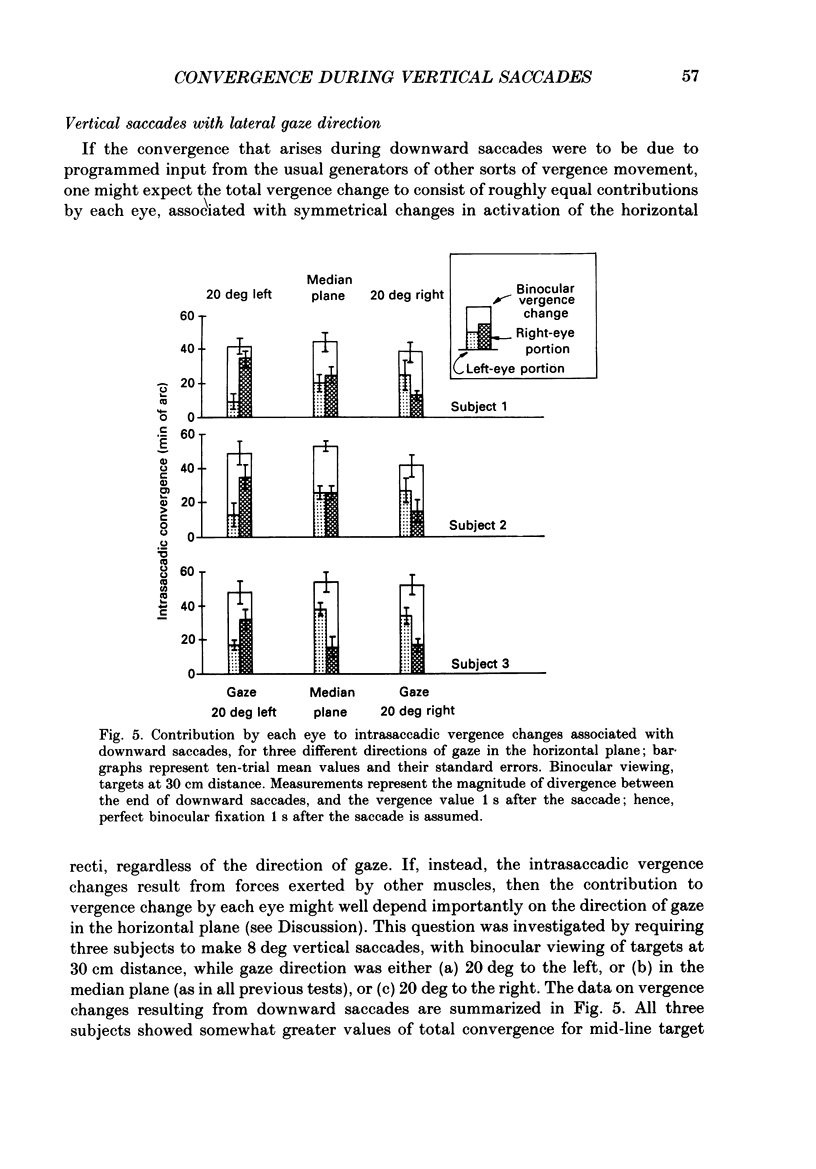
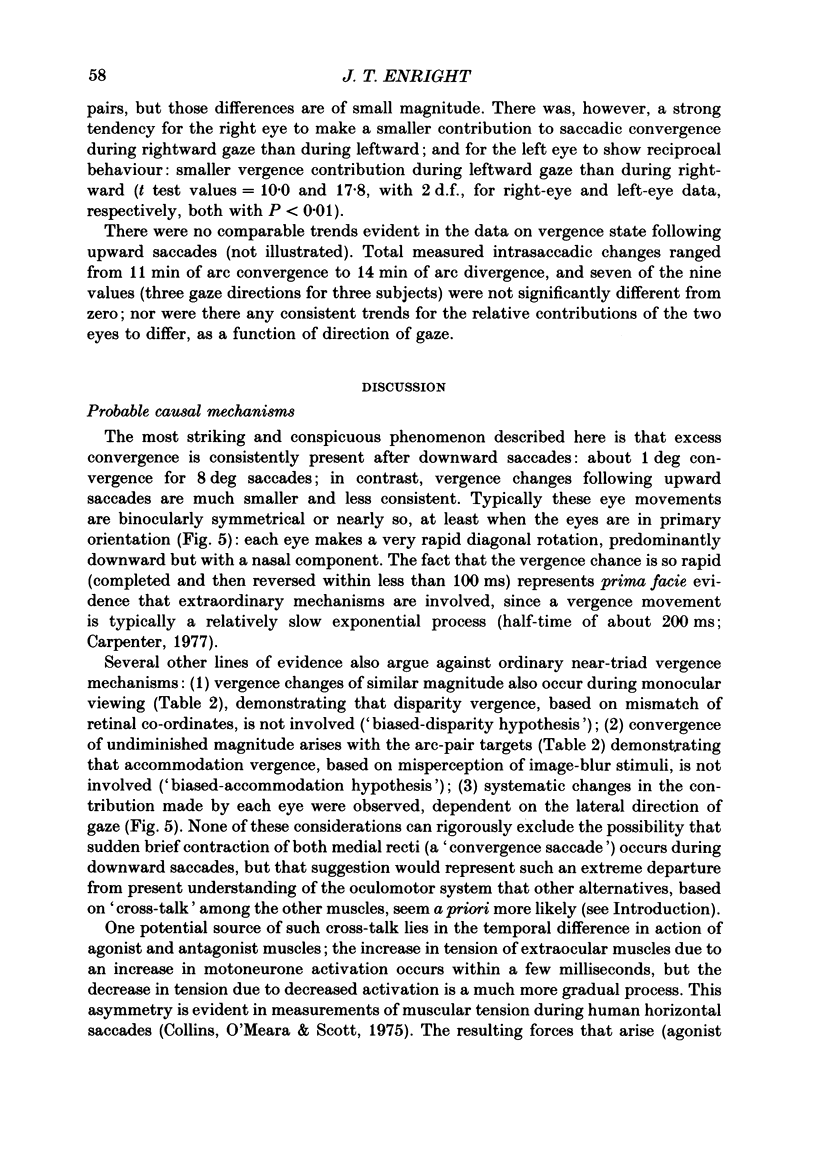
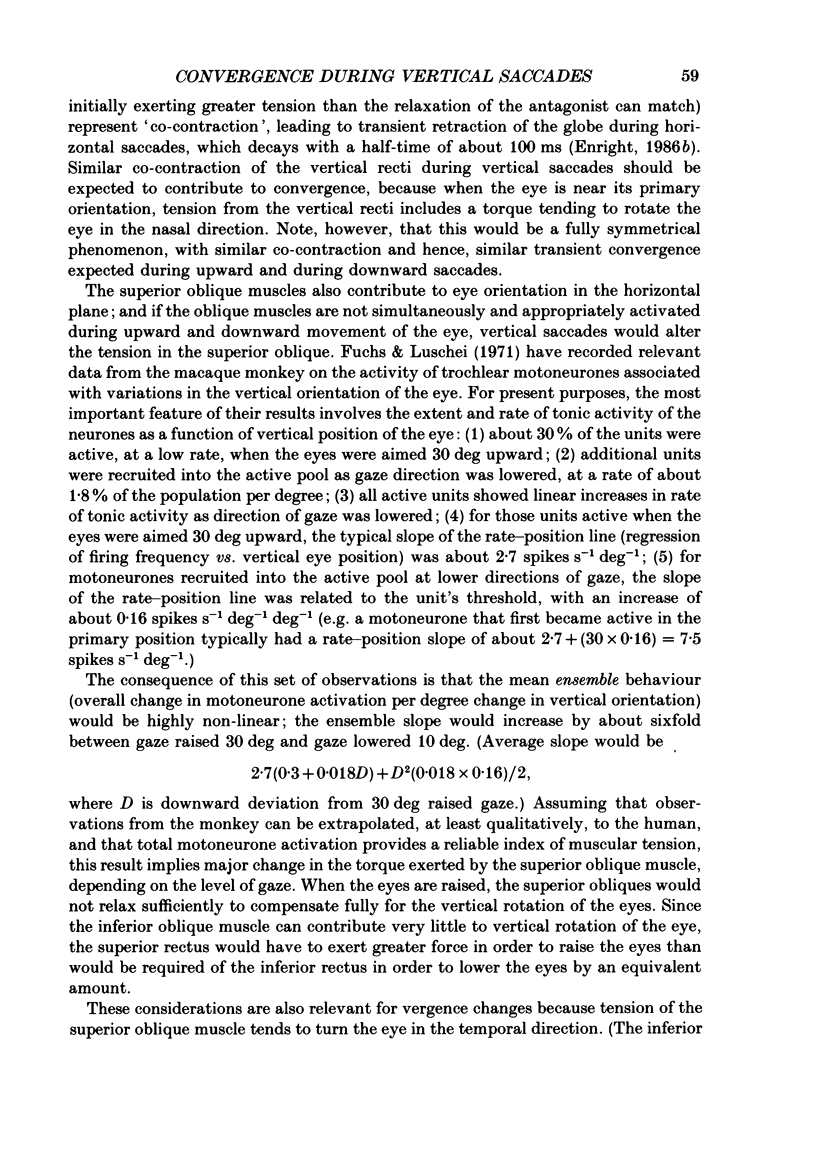
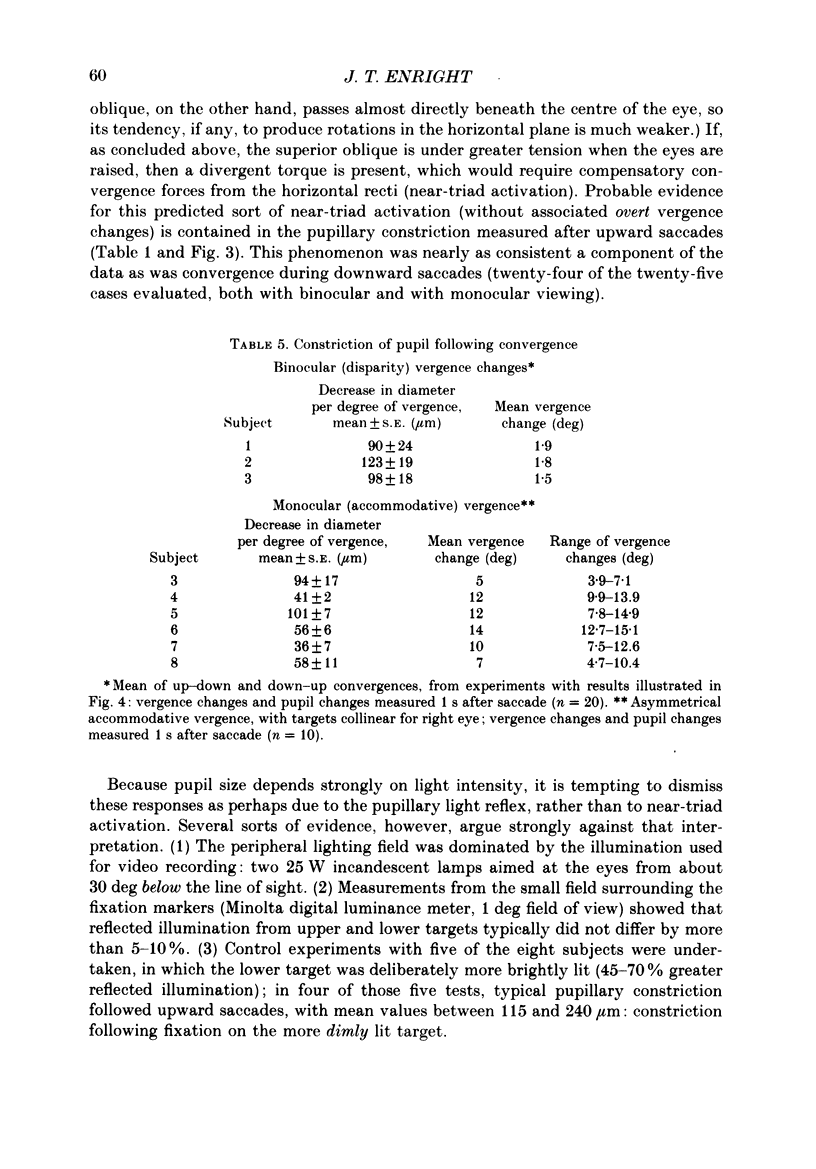
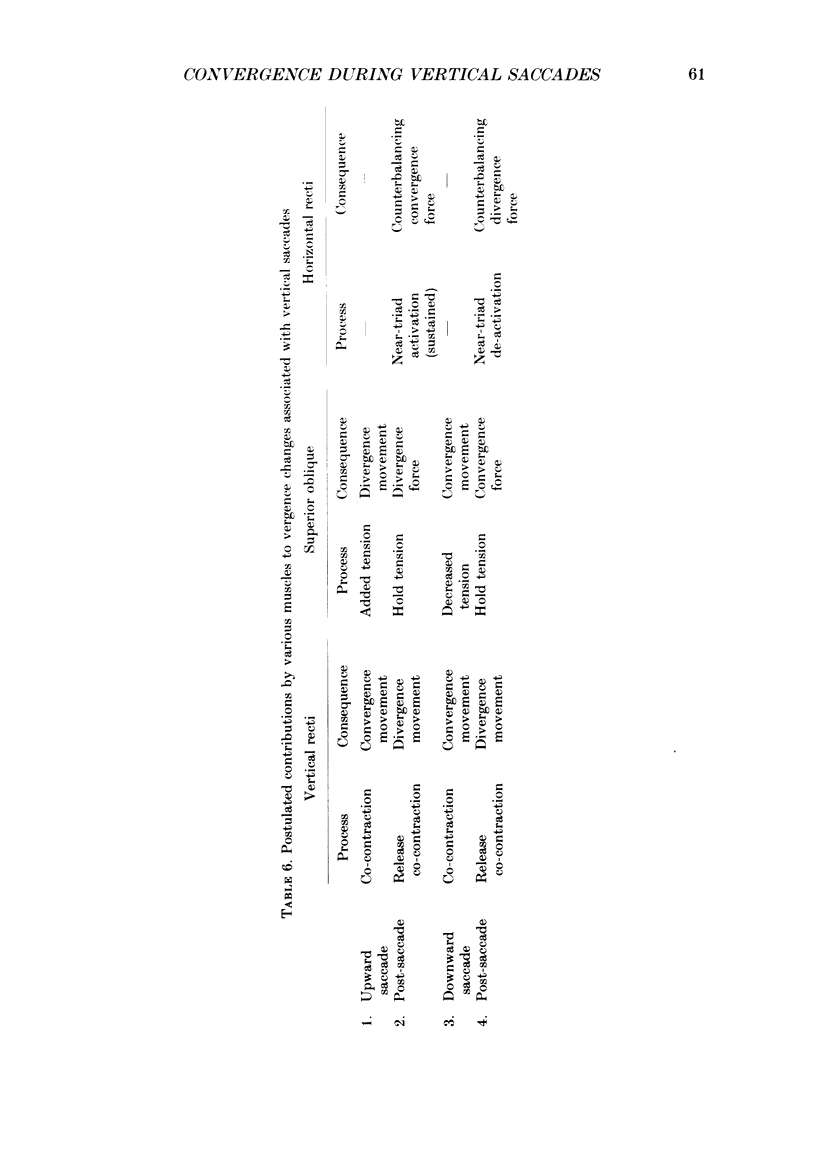
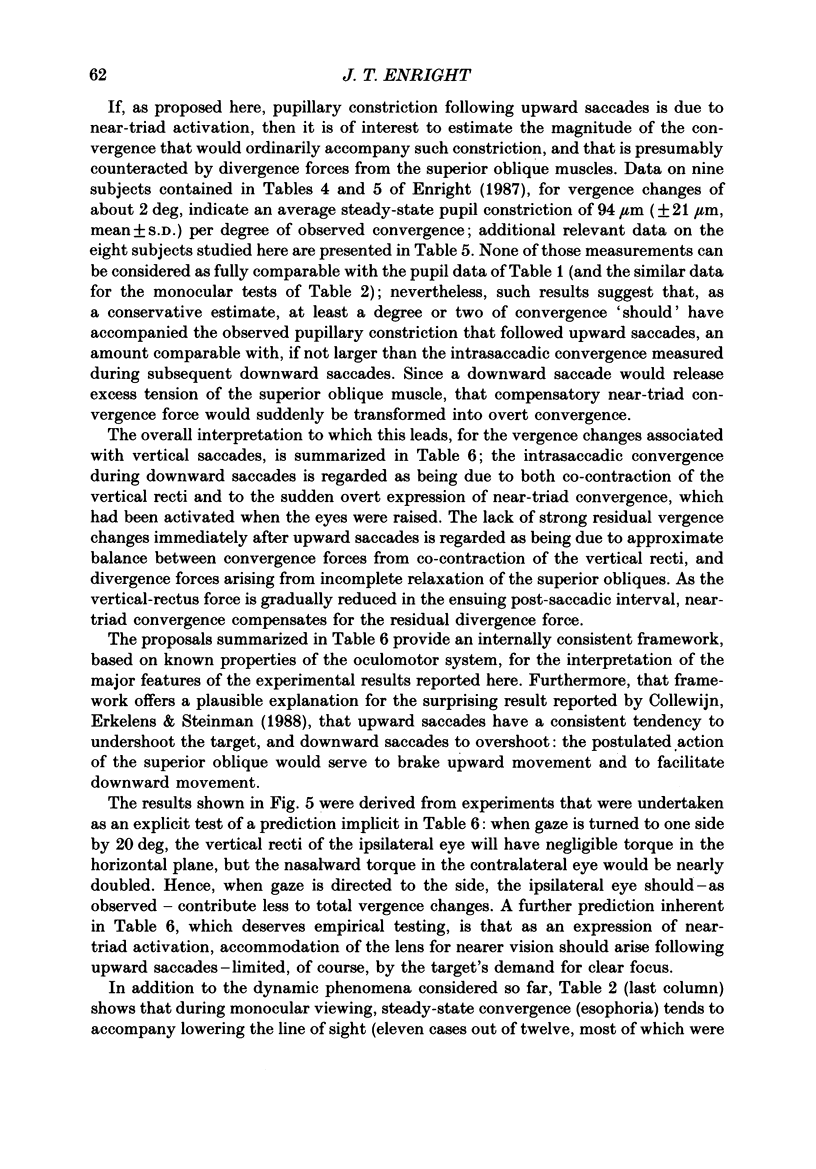
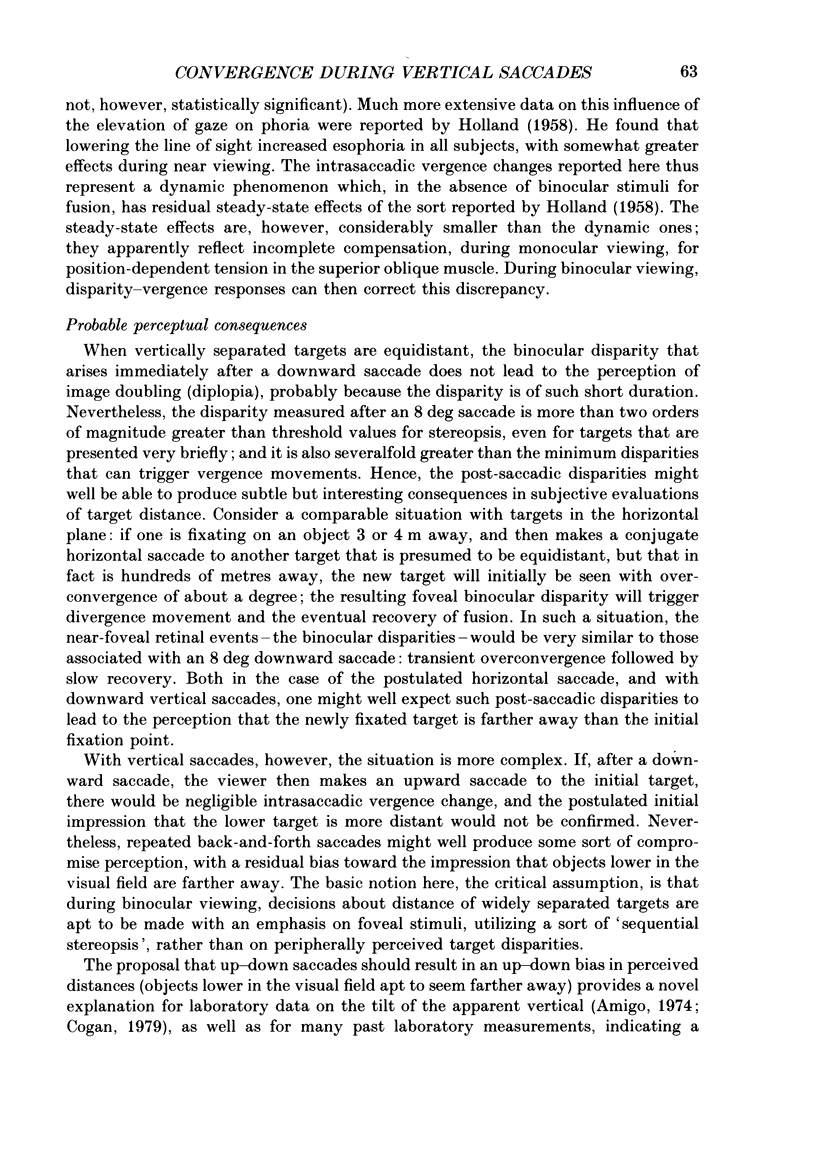
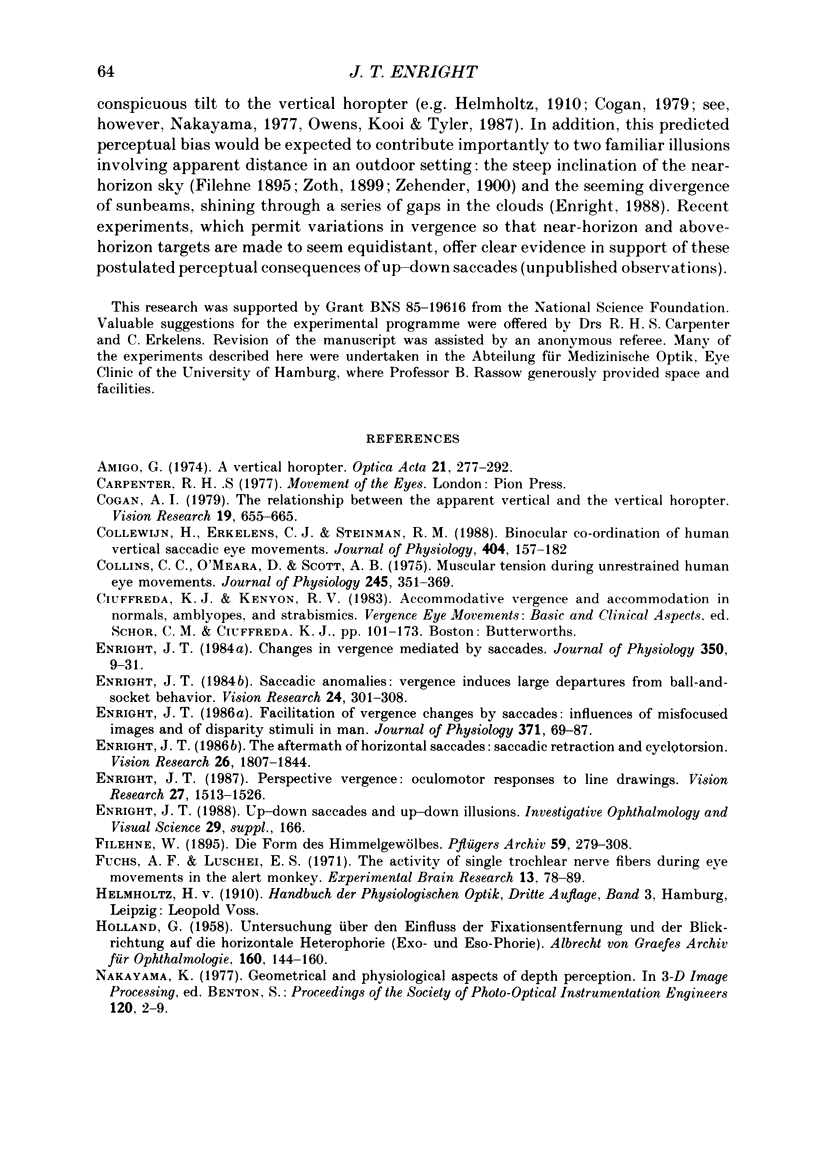
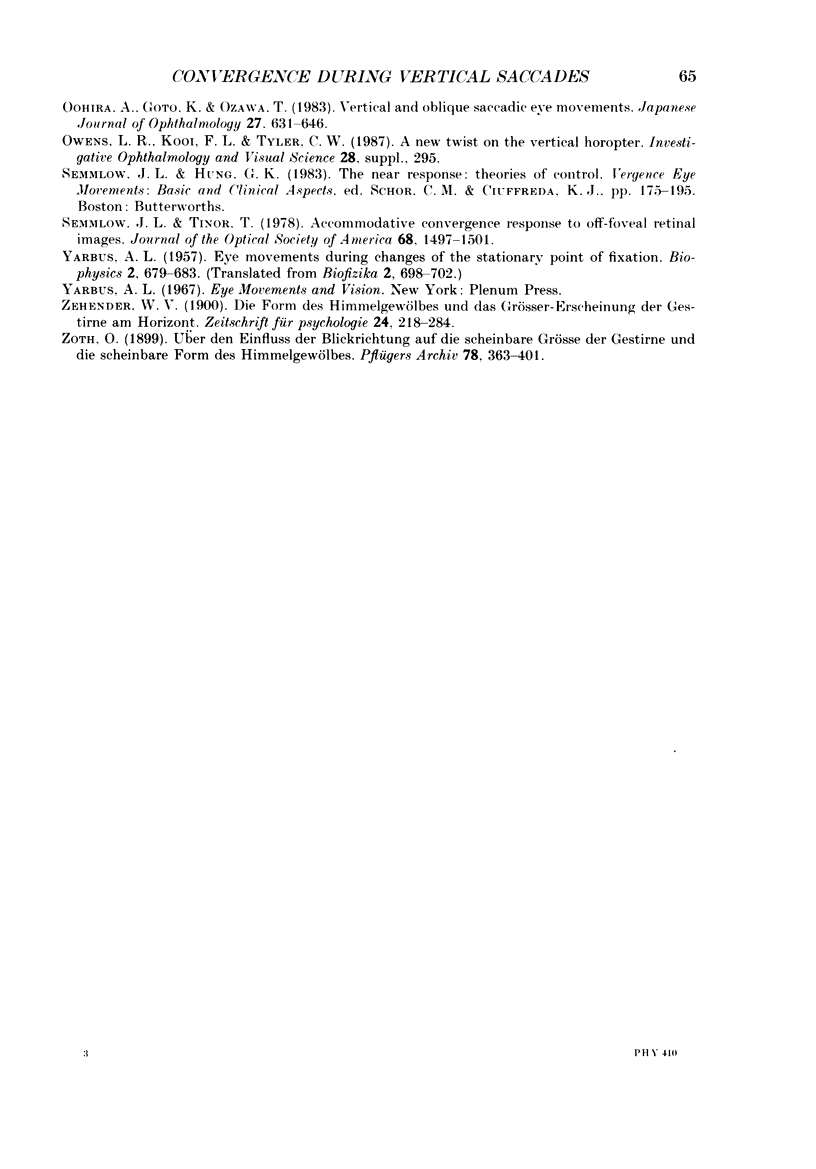
Selected References
These references are in PubMed. This may not be the complete list of references from this article.
- Cogan A. I. The relationship between the apparent vertical and the vertical horopter. Vision Res. 1979;19(6):655–665. doi: 10.1016/0042-6989(79)90241-4. [DOI] [PubMed] [Google Scholar]
- Collewijn H., Erkelens C. J., Steinman R. M. Binocular co-ordination of human horizontal saccadic eye movements. J Physiol. 1988 Oct;404:157–182. doi: 10.1113/jphysiol.1988.sp017284. [DOI] [PMC free article] [PubMed] [Google Scholar]
- Collins C. C., O'Meara D., Scott A. B. Muscle tension during unrestrained human eye movements. J Physiol. 1975 Feb;245(2):351–369. doi: 10.1113/jphysiol.1975.sp010850. [DOI] [PMC free article] [PubMed] [Google Scholar]
- Enright J. T. Changes in vergence mediated by saccades. J Physiol. 1984 May;350:9–31. doi: 10.1113/jphysiol.1984.sp015186. [DOI] [PMC free article] [PubMed] [Google Scholar]
- Enright J. T. Facilitation of vergence changes by saccades: influences of misfocused images and of disparity stimuli in man. J Physiol. 1986 Feb;371:69–87. doi: 10.1113/jphysiol.1986.sp015962. [DOI] [PMC free article] [PubMed] [Google Scholar]
- Enright J. T. Perspective vergence: oculomotor responses to line drawings. Vision Res. 1987;27(9):1513–1526. doi: 10.1016/0042-6989(87)90160-x. [DOI] [PubMed] [Google Scholar]
- Enright J. T. Saccadic anomalies: vergence induces large departures from ball-and-socket behavior. Vision Res. 1984;24(4):301–308. doi: 10.1016/0042-6989(84)90055-5. [DOI] [PubMed] [Google Scholar]
- Enright J. T. The aftermath of horizontal saccades: saccadic retraction and cyclotorsion. Vision Res. 1986;26(11):1807–1814. doi: 10.1016/0042-6989(86)90132-x. [DOI] [PubMed] [Google Scholar]
- HOLLAND G. Untersuchungen über den Einfluss der Fixationsentfernung und der Blickrightung auf die horizontale Heterophorie (Exo- und Esophorie). Albrecht Von Graefes Arch Ophthalmol. 1958;160(2):144–160. [PubMed] [Google Scholar]
- Oohira A., Goto K., Ozawa T. Vertical and oblique saccadic eye movements. Jpn J Ophthalmol. 1983;27(4):631–646. [PubMed] [Google Scholar]
- Semmlow J. L., Tinor T. Accommodative convergence response to off-foveal retinal images. J Opt Soc Am. 1978 Nov;68(11):1497–1501. doi: 10.1364/josa.68.001497. [DOI] [PubMed] [Google Scholar]


